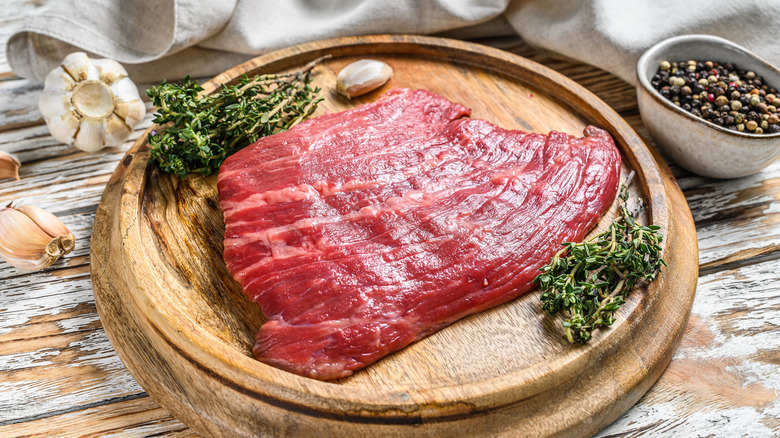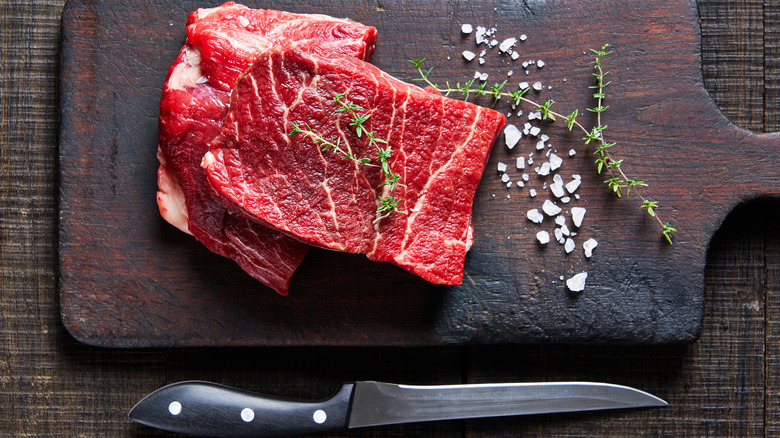The One Part Of The Flat Iron Cut Of Steak You Should Never Eat
Flat iron steak is a relatively lean cut of beef, but it still has ample marbling to provide tenderness and flavor. While the cut can be juicy and supple, a line of fibrous tissue (known as sinew or tendon) runs through the middle of the area the steak comes from, making some bites tough, chewy, and not at all enjoyable.
Flat iron steak is from the chuck portion of the cow, which is its lower neck and shoulder region. Steaks from this area, including chuck roast and Denver cut, tend to have the most connective tissue. The flat iron steak was once part of a larger cut called the top blade roast. Due to the sinew, the roast was cut into two parts — the flat iron steak and the top-blade steak. Although the top-blade steak and the flat iron come from the same muscle, there is a marked difference in the way the two are cut. Each cow has only two flat iron cuts held together by the sinew. The flat iron is cut laterally against the sinew, removing it, while the top blade is simply a cross-section cut of the two flat irons that still contains the band of fiber.
How to remove the sinew
If you purchase the whole flat iron steak with the tissue running through it, you can ask the butcher to cut it out or remove it at home and make your own sinew-free flat iron steaks from it. Since the process is essentially like filleting a fish, you'll want to use a flexible boning knife.
The goal is to run the knife as close as possible under the sinew (or silverskin) to detach it from the meat. Once the initial cut has been made and your knife is under the sinew, grab it with your other hand to pull it taut and create tension while slightly lifting it up. Go slow and use small, sweeping motions to keep as much of the meat intact as possible. Once you're done with one side, flip it over and repeat. You'll end up with two flat iron steaks and a band of sinew that goes right into the trash.

